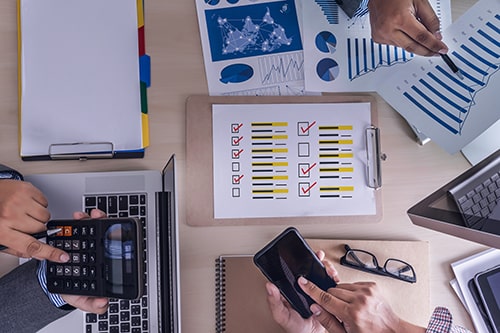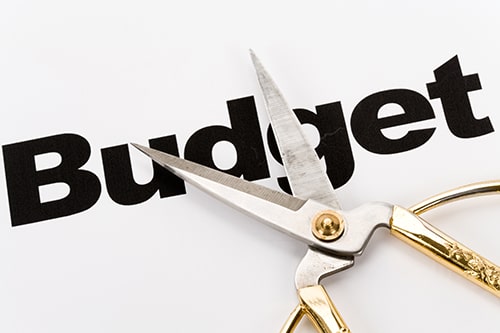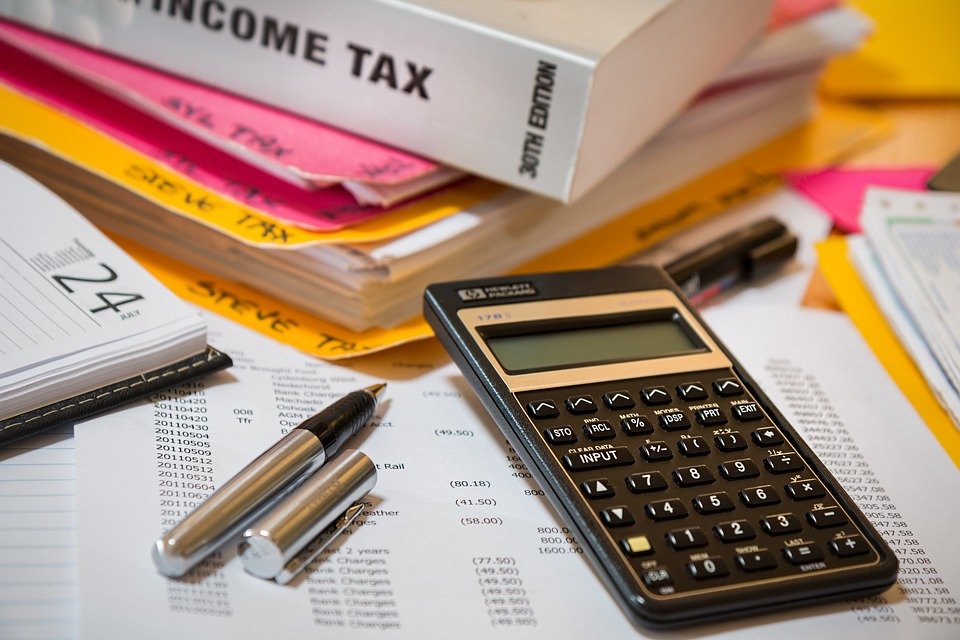Summary and Details of the Government Coronavirus COVID-19 Stimulus
Updated: 24/04/2020
With the government announcing so many stimulus measures over the past couple of weeks, we thought it was best to hold off releasing any of the information until now. In this article we will provide a summary of the stimulus measures as they apply to individuals and business, and have detail of each of the measures beyond the summary. All of these measures have now been legislated through the parliament.
SUMMARY
Individuals
The Coronavirus Supplement – New six month supplement of $550 per fortnight paid to eligible Jobseeker (Newstart), Youth Allowance and Parenting Payment recipients with expansion of eligibility to works stood down or lose their employment.
Tax-free payments of $750 – Two payments of $750 tax-free payments to social security, veteran and other income support recipients and to eligible concession card holders. To be paid from 31 March 2020 for the first payment and from 13 July 2020 for the second payment.
Early access to superannuation benefits – New compassionate ground of release to access superannuation entitlements of up to $20,000 (up to $10,000 per release – before 1 July 2020 and after 1 July 2020.) Available to the unemployed, those receiving payments from Centrelink and individuals who were made redundant or working hours reduced by at least 20% on or after 1 January 2020.
Reducing the minimum drawdown amounts for superannuation pensions – Minimum account-based pensions or similar drawdowns have been halved for the 2020 and 2021 years.
Reducing social security deeming rates – The upper deeming rate will be reduced from 3% to 2.25% and the lower deeming rate will be reduced from 1% to 0.25% from 1 May 2020.
Wages subsidies for apprentices and trainees – Under eligible employers, apprentices and trainees will have their wages subsidised equal to 50% of the wage for 9 months. Maximum of $21,000 per eligible employee.
JobKeeper $1500 per Fortnight Payment – If you have been laid off by your employer or your employer’s business turnover has dropped by 30% or more (for under $1 billion turnover) or by 50% or more (for over $1 billion turnover) your employer may be eligible for the JobKeeper payment. This is up to your employer to register for it.
Small Business
Boosting cash flow for employers – For business with an annual turnover under $50 million and whom employ are eligible for credits against their ATO Account for the PAYG Withholding paid. The credits are split into two, total minimum is $20,000 and maximum is $100,000.
Wages subsidies for apprentices and trainees – Employers with eligible apprentices and trainees will have their wages subsidised equal to 50% of the wage for 9 months. Maximum of $21,000 per eligible employee.
Increasing the instant write-off threshold for business assets – Instant Asset Write Off has been increased to $150,000. This includes small business (Less than $50million turnover) and medium business (less than $500million turnover) – for the period 12 March to 30 June 2020. It also includes improvements to assets.
Accelerating depreciation deductions for new assets – For Small and Medium business for the time period 12 March 2020 to 30 June 2021, can deduct 50% of the cost of the asset plus the usual amount of depreciation. This will really come into play post 30 June 2020 when the increased instant asset write off ceases.
JobKeeper Payment – Eligible employers will be able to claim a $1500 per fortnight subsidy per eligible employee where they have been forced to cease business or for businesses with turnover less than $1 Billion, where turnover has decreased by 30% or more or for businesses with turnover more than $1 Billion, where turnover has decreased by 50%.
Sole Traders / Self Employed
The Coronavirus Supplement – Where a sole trader or self employed person has had a decrease in turnover of 20% or more, they will be eligible for the $550 per fortnight coronavirus supplement from Centrelink.
Early access to superannuation benefits – Where a sole trader or self employed person has had a decrease in turnover of 20% or more, they will be eligible for the early access to super.
JobKeeper $1500 per Fortnight Payment – Where a sole trader or self employed person has had a decrease in turnover of 30% or more, they will be eligible for the $1500 per fortnight payment. Subject to on-going reporting commitments.
Increasing the instant write-off threshold for business assets – Where a sole trader qualifies as a Small Business Entity, they will be eligible for the increased instant asset write off of up to $150,000 from 12 March 2020 to 30 June 2020.
Accelerating depreciation deductions for new assets – Where a sole trader qualifies as a Small Business Entity, they will be eligible for the accelerated depreciation where can deduct 50% of the asset plus the usual depreciation for the period 12 March 2020 to 30 June 2021.
DETAILS
Individuals
The Coronavirus Supplement
A new six-month ‘Coronavirus supplement’ of $550 per fortnight will be paid to individuals who are currently eligible for certain income support payments, including the Jobseeker Payment (Newstart), Youth Allowance and Parenting Payment (Partnered and Single).
This new (additional) supplement will be paid to eligible individuals as part of their existing income support payments (e.g., Jobseeker Payment and Youth Allowance). For the period that the Coronavirus supplement is paid, the Government will also expand access to certain income support payments (e.g.,the Jobseeker Payment, the Youth Allowance
Jobseeker and the Parenting Payment) for eligible individuals. This will include permanent employees who are stood down or lose their employment, sole traders, self-employed, casual workers, and contract workers who meet the income tests, as a result of the economic downturn due to the Coronavirus. Additionally, asset testing for the Job Seeker Payment, the Youth Allowance Jobseeker and the Parenting Payment will be waived for the period of the Coronavirus supplement. Income testing will still apply to the person’s other payments, consistent with current arrangements.
Tax-free payments of $750
The Government will be providing two separate $750 tax-free payments to social security, veteran and other income support recipients and to eligible concession card holders.
The first $750 payment will be available to individuals who are residing in Australia and are receiving an eligible Government payment, or are the holders of an eligible concession card, at any time from 12 March 2020 to 13 April 2020 (inclusive). This payment will be made automatically to eligible individuals from 31 March 2020.
The second $750 payment will be available to individuals who are residing in Australia and are receiving one of the eligible Government payments or are the holders of one of the eligible concession cards on 10 July 2020 This payment will be made automatically to eligible individuals from 13 July 2020.
Each of the $750 payments will be exempt from income tax and will not count as income for the purposes of Social Security, the Farm Household Allowance and Veteran payments.
PLEASE NOTE: For those receiving an income support payment that qualifies them to receive the $550 fortnightly Coronavirus supplement, aren’t eligible to receive the two $750 payments.
Early access to superannuation benefits
The Government has introduced a new compassionate ground of release that will allow individuals to access their superannuation entitlements where those benefits are required to assist them to deal with the adverse economic effects of the Coronavirus, but only where one or more of the following requirements are satisfied:
The individual is unemployed, The individual is eligible to receive the Jobseeker Payment, Youth Allowance for jobseekers, Parenting Payment (which includes the single and partnered payments), Special Benefit or Farm Household Allowance. On or after 1 January 2020 either:
– the individual was made redundant; or
– the individual’s working hours were reduced by at least 20%; or
– if the individual is a sole trader – their business was suspended or there was a reduction in the business’s turnover of at least 20%.
Under this new compassionate ground of release, eligible individuals will be able to access (as a lump sum) up to $10,000 of their superannuation entitlements before 1 July 2020, and a further $10,000 from 1 July 2020 (subject to a six-month time frame).
Eligible individuals who are looking to access their superannuation entitlements under the above new ground of release will be able to apply directly to the ATO through the myGov website (at www.my.gov.au) and certify that the relevant eligibility criteria is satisfied.
Please Note: The lump sum withdrawal/s from superannuation under this ground of release will not be taxable, so it is a tax-free payment/s. It will also not affect other payments being received under Centrelink or Veteran’s Affairs.
Reducing the minimum drawdown amounts for superannuation pensions
The Government will be temporarily reducing the superannuation minimum drawdown amounts for account-based pensions and similar products by 50% for the 2020 and 2021 income years.
Reducing social security deeming rates
From 1 May 2020, the Government will be reducing both the upper and lower social security deeming rates by a further 0.25 percentage points. This is in addition to the recent 0.5 percentage point reduction, resulting in an overall reduction to the social security deeming rates of 0.75 percentage points. On this basis, as of 1 May 2020, the upper deeming rate will be reduced from 3% to 2.25%, and the lower deeming rate will be reduced from 1% to 0.25%.
JobKeeper $1500 per Fortnight Payment
Employees of eligible employers and eligible sole traders/self employed may be eligible to receive the JobKeeper payment of $1500 per fortnight for 6 months. As it is the employer, sole trader or self employed individual who is required to register for this, please see the Small Business section of this article.
Small Business (Including Sole Traders & Self Employed)
Boosting cash flow for employers
Small and medium-sized businesses and not-for-profit entities, with an aggregated annual turnover of less than $50 million (usually based on their prior year’s turnover) that employ people, are eligible to receive a total payment (in the form of a refundable credit) of up to $100,000 (with a minimum total payment of $20,000), based on their PAYG withholding obligations in two stages:
Stage 1 payment (credit)
Commencing with the lodgement of activity statements from 28 April 2020, eligible employers that withhold PAYG tax on their employees’ salary and wages will receive a tax-free payment equal to 100% of the amount withheld, up to a maximum of $50,000. Eligible employers that pay salary and wages will receive a minimum (tax-free) payment of $10,000, even if they are not required to withhold PAYG tax.
The tax-free payment will broadly be calculated and paid by the ATO as an automatic credit to an employer, upon the lodgement of activity statements from 28 April 2020, with any resulting refund being paid to the employer. This means that:
- quarterly lodgers will be eligible to receive the payment for the quarters ending March 2020 and June 2020; and
- monthly lodgers will be eligible to receive the payment for the March 2020, April 2020, May 2020 and June 2020 lodgements.
Note that, the minimum payment of $10,000 will be applied to an entity’s first activity statement lodgement (whether for the month of March or the March quarter) from 28 April 2020.
Stage 2 payment (credit)
For employers that continue to be active, an additional (tax-free) payment will be available in respect of the June to October 2020 period, basically as follows:
- Quarterly lodgers will be eligible to receive the additional payment for the quarters ending June 2020 and September 2020, with each payment being equal to 50% of their total initial (or Stage 1) payment (up to a maximum of $50,000).
- Monthly lodgers will be eligible to receive the additional payment for the June 2020, July 2020, August 2020 and September 2020 activity statement lodgements, with each additional payment being equal to a quarter of their total initial (or Stage 1) payment (up to a maximum of $50,000).
Again, the ATO will automatically calculate and pay the additional (tax-free) payment as a credit to an employer upon the lodgement of their activity statements from July 2020, with any resulting refund being paid to the employer.
Wages subsidies for apprentices and trainees
Employers with less than 20 full-time employees, who retain an apprentice or trainee (who was in training with the employer as of 1 March 2020) are entitled to Government funded wage subsidies.
These will be equal to 50% of the apprentice’s or trainee’s wage paid during the nine months from 1 January 2020 to 30 September 2020. The maximum wage subsidy over the nine-month period will be $21,000 per eligible apprentice or trainee.
Employers can register for the subsidy from early April 2020.
Increasing the instant write-off threshold for business assets
Broadly, the depreciating asset instant asset write off threshold will be increased from $30,000 (for Businesses with an aggregated turnover of less than $50 million) to $150,000 (for businesses with an aggregated turnover of less than $500 million) until 30 June 2020.
The measure applies to both new and secondhand assets first used or installed ready for use in the period beginning on 12 March 2020 and ending on 30 June 2020.
Small Business Entities (‘SBEs’)
SBEs will be able to claim an immediate deduction for depreciating assets that cost less than $150,000 provided the relevant asset is first acquired at or after 7.30 pm on 12 May 2015, by legal time in the ACT, and first used or installed ready for use on or after 12 March 2020, but before 1 July 2020.
Additionally, SBEs will also be able to claim an immediate deduction for the following:
- Improvements to a depreciating asset that was first used or installed ready for use in a previous income year. The amount of the improvement cost must be less than $150,000 and the cost must be incurred on or after 12 March 2020, but before 1 July 2020.
- If the balance of an entity’s general small business pool (excluding current year depreciation) is less than $150,000 at the end of the 2020 income year, a deduction can be claimed for this balance.
Medium Business Entities (‘MBEs’)
MBEs can immediately deduct the cost of an asset in an income year if the asset has a cost of less than $150,000 and it was first acquired in the period beginning at 7:30 pm, by legal time in the ACT, on 2 April 2019 and ending on 30 June 2020, and the taxpayer starts to use or have the asset installed ready for use for a taxable purpose in the period beginning on 12 March 2020 and ending on 30 June 2020.
Additionally, MBEs can also claim a deduction for improvements to a depreciating asset, where the amount of the improvement cost is less than $150,000 and is incurred on or after 12 March 2020 but before 1 July 2020.
Please Note: The threshold will generally be applied to the GST exclusive cost of an eligible asset (i.e., assuming the relevant business is entitled to an input tax credit for any GST included in the acquisition cost). Importantly, this increased threshold also continues to operate on a ‘per asset’ basis, which means that eligible businesses can immediately write-off multiple assets (as long as each of the assets individually satisfy the relevant eligibility criteria).
Accelerating depreciation deductions for new assets
Broadly, a new time-limited 15-month investment incentive (available for eligible assets acquired from 12 March 2020 up until 30 June 2021) will also be introduced to accelerate certain depreciation deductions for businesses with an aggregated turnover below $500 million.
The amount that an eligible entity can deduct in the income year in which an eligible depreciating asset is first used or installed ready for use is
- 50% of the cost (or adjustable value where applicable) of the asset; and
- the amount of the usual depreciation deduction that would otherwise apply (if it were calculated on the remaining cost of the asset).
Different rules will apply where an SBE is using the general small business pool (i.e., for assets not qualifying for the instant asset write-off). In this case, an SBE may deduct an amount equal to 57.5% (rather than 15%) of the business-use portion of the cost of an eligible depreciating asset in the year is it allocated to the pool.
Unless specifically excluded, an eligible asset is a new asset that can be depreciated under Division 40 of the ITAA 1997 (i.e., plant and equipment and specified intangible assets, such as patents), where the asset satisfies all of the following conditions:
- The asset is new and has not previously been held (and used or installed ready for use) by another entity (other than as trading stock or for testing and trialing purposes).
- No entity has claimed depreciation deductions (including under the instant asset write-off) in respect of the asset.
- The asset is first held, and first used or installed ready for use, for a taxable purpose, between 12 March 2020 and 30 June 2021 (inclusive).
Note that a depreciating asset is not an eligible asset where a commitment to acquire or construct the asset was entered into before 12 March 2020.
JobKeeper Payment
The JobKeeper payment is a subsidy that will be paid through the tax system (i.e., by applying to the ATO) to eligible employers (and self-employed individuals) impacted by the Coronavirus.
Eligible employers will be able to claim a subsidy of $1,500 per fortnight, per eligible employee, from 30 March 2020 (with payments commencing from the first week of May 2020), for a maximum period of six months. This subsidy will be paid by the ATO monthly in arrears and will ensure that an eligible employee receives a gross payment (i.e., before tax) of at least $1,500 per fortnight.
Self-employed individuals (i.e., businesses without employees) can also qualify to receive the JobKeeper Payment.
Employers will be eligible for the JobKeeper subsidy where:
• for a business with a turnover of less than $1 billion – its turnover will be reduced by more than 30% relative to a comparable period a year ago (of at least a month); or
• for a business with a turnover of $1 billion or more – its turnover will be reduced by more than 50% relative to a comparable period a year ago (of at least a month); and
• the business is not subject to the Major Bank Levy.
Self-employed individuals (i.e., businesses without employees) and not-for-profit entities (including charities) that satisfy the above requirements will be eligible to apply for the JobKeeper Payment.
Before an eligible employer can claim the JobKeeper payment in respect of an employee (‘eligible employee’), the employee must satisfy the following requirements:
• The employee is currently employed by the employer (which includes an employee who has been stood down or re-hired after they had already lost their job).
• The employee was employed by the employer as at 1 March 2020.
• The employee is a full-time or part-time employee, or a long-term casual employee who has been employed by the employer on a regular basis for longer than 12 months at 1 March 2020.
• The employee is at least 16 years of age.
• The employee is an Australian citizen, or the holder of a permanent visa, a Protected Special Category Visa Holder, a non-protected Special Category Visa Holder who has been residing continually in Australia for 10 years or more, or a Special Category (Subclass 444) Visa Holder
• The employee is not in receipt of a JobKeeper Payment from another employer.
Note: Employees who have multiple employers will need to notify their primary employer to claim the JobKeeper Payment on their behalf, as only one employer will be eligible to receive the payment. In most cases, the claiming of the tax-free threshold will be sufficient notification that an employer is the employee’s primary employer.
Initially, businesses can start to register their interest in applying for the JobKeeper payment from 30 March 2020, on the ATO’s website at www.ato.gov.au. The first payments under this measure are expected to be made to an eligible business from the first week of May 2020.
Eligible employers that apply for the JobKeeper Payment (i.e., via an online application) will need to provide supporting information demonstrating a downturn in their business, and must report the number of eligible employees employed by the business on a monthly basis.
Businesses without employees (e.g., self-employed individuals) will need to provide an ABN for the business, nominate an individual to receive the JobKeeper payment and provide that individual’s Tax File Number, as well as provide a declaration on the recent business activity (presumably, to demonstrate the downturn in the business). These businesses will also need to provide a monthly update to the ATO in order to declare their continued eligibility for the JobKeeper Payment.
The underlying purpose of the JobKeeper Payment is to ensure that eligible workers (including eligible employees) are paid a gross minimum amount of $1,500 per fortnight. In particular, for eligible employers who receive the JobKeeper Payment for an eligible employee, the employee will receive this payment basically as follows:
(a) If the employee ordinarily receives at least $1,500 in gross salary income per fortnight, they will continue to receive their regular income according to their prevailing workplace arrangements. In this case, the JobKeeper Payment will effectively subsidise part or all of the employee’s gross fortnightly salary income.
(b) If the employee ordinarily receives less than $1,500 in gross salary income per fortnight, their employer must pay the employee a minimum gross fortnightly salary income of $1,500 under the JobKeeper Payment scheme.
(c) If an employee has been stood down, their employer must pay the employee a minimum gross fortnightly salary income of $1,500 under the JobKeeper Payment scheme.
(d) If an employee was employed on 1 March 2020, has subsequently ceased employment with their employer, and then has been re-engaged by the same employer, the employee will receive a minimum gross fortnightly salary of $1,500 under the JobKeeper payment scheme.
Please Note: Many of the comments in this article are general in nature and anyone intending to apply the information to practical circumstances should seek professional advice to independently verify their interpretation and the information’s applicability to their particular circumstances.











